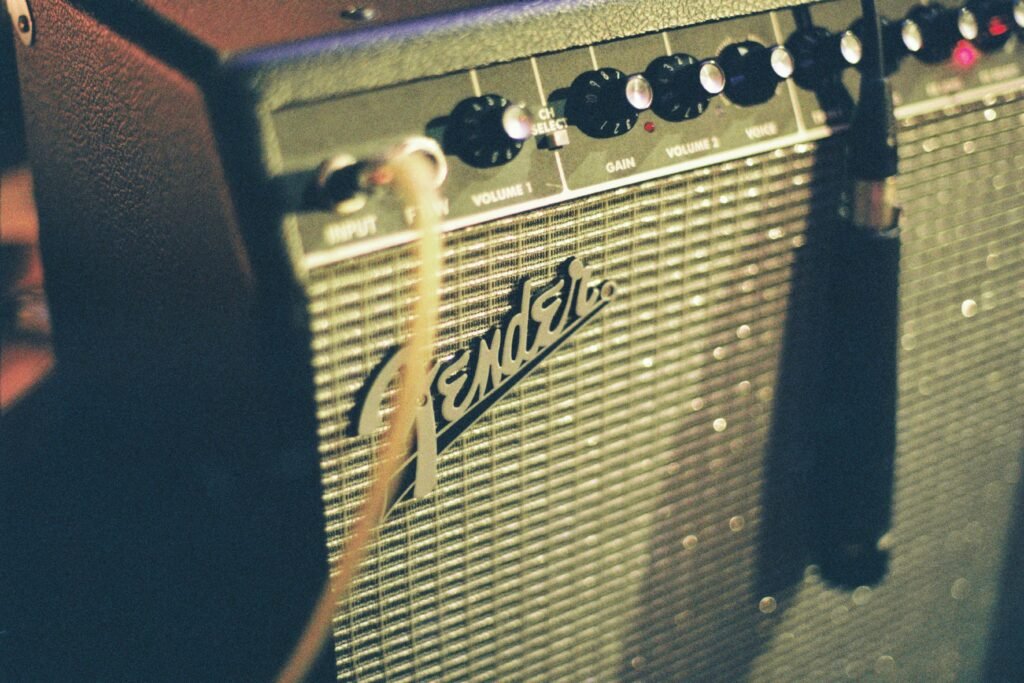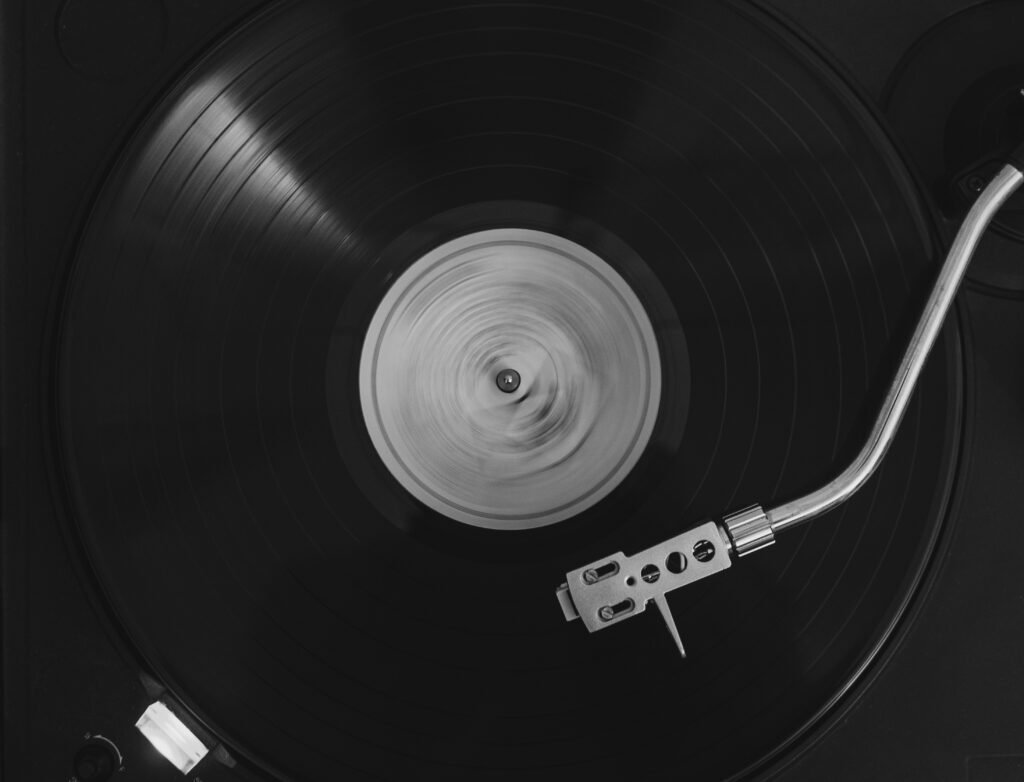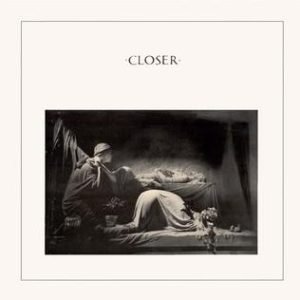Released in July 1980, just two months after the tragic death of lead singer Ian Curtis, Closer stands as a haunting monument to Joy Division’s brief but powerful existence. As the band’s second and final studio album, it serves both as a culmination of their sonic journey and a deepening of the themes first explored in their debut, Unknown Pleasures. Where the debut was stark and visceral, Closer dives further into abstraction and despair, using space and texture to shape its emotional landscape.
This album arrived at a time when post-punk was beginning to assert itself as more than a reaction to punk’s raw energy. Joy Division helped define this movement, and with Closer, they pushed its boundaries. The album is not a departure, but rather an intensification of the band’s core ideas. It extends the shadowy aesthetic and existential unease of their earlier work into more refined and atmospheric territory.
Sonic Exploration

Closer is a masterclass in mood-driven production. Martin Hannett, the producer behind both of Joy Division’s studio albums, returned to sculpt a sound that is even more cavernous and spectral than before. The production is spacious yet controlled, allowing each instrument to echo within its own emotional orbit. Unlike the raw, abrasive sounds that defined much of the late 1970s punk scene, Closer is polished in its restraint. Hannett embraced studio experimentation, using reverb, delay, and unconventional mic placements to give the album a cold, distant feel that mirrors the detachment in Ian Curtis’s lyrics.
The musical arrangements on Closer are deliberate and haunting. Bernard Sumner’s guitar work often retreats into the background, letting synthesizers and atmospheric textures take the lead. Stephen Morris’s drumming is tight and metronomic, often evoking a mechanical pulse that grounds the album’s more ethereal elements. Peter Hook’s bass, as always, is front and center, not just supporting the rhythm but shaping the melodic core of each song. Together, these arrangements create a dynamic tension between presence and absence, intensity and stillness.
In terms of genre, Closer sits firmly within the post-punk movement, yet it reaches beyond its boundaries. There are clear traces of gothic rock in the brooding tones and minor-key melodies. Tracks like “The Eternal” and “Decades” hint at the ambient and electronic directions that would later be explored by New Order, the band formed by the surviving members after Curtis’s death. While rooted in the stark minimalism of post-punk, Closer bends the genre into something more introspective and poetic. It does not shout to be heard. It murmurs from the edge, and that’s what makes it unforgettable.
Lyrical Analysis

The lyrics of Closer are steeped in isolation, decay, and a profound sense of existential weight. Ian Curtis wrote with a stark clarity that veered between the personal and the philosophical. On this album, the themes that emerged on Unknown Pleasures—alienation, inner conflict, and the fragility of the human condition—are rendered with even more depth and despair. Every line feels like it was written under the weight of invisible pressure, as if Curtis was pulling thoughts from the edge of consciousness.
Recurring motifs run through the album like faint echoes. Images of finality, broken communication, and spiritual yearning appear again and again. In “Passover,” Curtis sings of inherited burdens and the inescapable pull of fate. In “Twenty Four Hours,” the lyrics track a descent from regret into anguish, capturing the feeling of time slipping through fractured memory. These aren’t stories in the traditional sense—they’re emotional states, rendered in stark, almost liturgical language.
Curtis’s writing is abstract, yet it carries a heavy emotional charge. He rarely tells a linear story. Instead, he evokes mental landscapes that feel both deeply personal and eerily universal. The words leave space for interpretation, which only deepens their resonance. They invite the listener to inhabit the silence between the lines, to feel what isn’t said as much as what is.
The emotional impact of these lyrics is hard to overstate. There is a vulnerability in Curtis’s voice that doesn’t ask for sympathy but still commands it. His baritone, often brittle and detached, feels like it is straining to stay connected to the world around it. That tension between presence and absence makes Closer not just an album to be heard, but one to be felt—deeply, and often painfully.
Cohesion and Flow

Closer is more than a collection of songs. It unfolds like a carefully constructed emotional arc, each track building upon the last with a quiet, deliberate force. The album opens with “Atrocity Exhibition,” a chaotic and unsettling piece that immediately plunges the listener into a fractured state of mind. From there, the mood tightens, becoming increasingly introspective. By the time the listener reaches “Decades,” the closing track, the atmosphere has shifted into a mournful calm, like the final breath of something fading away.
The flow between tracks is seamless. There are no abrupt changes in tempo or tone that break the spell. Instead, each song seems to emerge from the echoes of the one before it. The album’s pacing is slow and deliberate, mirroring the emotional descent that underpins its narrative structure. It feels less like a linear story and more like a spiral inward, each track peeling back another layer of psychological tension.
Thematic consistency is one of Closer’s greatest strengths. There is no deviation from its emotional center, no sudden burst of optimism or stylistic curveball to shake the listener out of the mood. The instrumentation, lyrical content, and production all serve a singular vision. Even as the songs differ in structure and arrangement, they share a common atmosphere—one of detachment, reflection, and sorrow. This cohesion transforms Closer from a great album into a complete and immersive experience. It does not just tell you what it feels like to fall apart. It makes you feel it too.
Standout Tracks and Moments
While Closer is best experienced as a whole, several tracks rise to the surface as defining moments of the album’s artistic depth and emotional power.
Isolation
“Isolation” stands out for its stark contrast between upbeat synths and bleak lyrics. Its propulsive rhythm and minimalistic electronic textures hint at the musical direction Joy Division might have taken had they continued. Yet, despite the song’s seemingly brighter surface, Curtis’s voice remains cold and distant, reinforcing the album’s core tension between sound and sentiment.
Twenty Four Hours
“Twenty Four Hours” is another highlight, capturing the volatile emotional energy that simmers just beneath the album’s reserved exterior. The track begins with a subdued melancholy before erupting into a storm of guitar and drums. This shift is not just dynamic—it is cathartic. It gives voice to the desperation that much of the album keeps carefully contained.
Decades
“Decades,” the final track, is perhaps the album’s most devastating moment. With its slow-moving synthesizers and ghostly vocal delivery, it feels like a farewell both personal and universal. The lyric “Where have they been?” repeats like a mantra, echoing the loss and disillusionment that saturate the record. It’s a moment of stillness that lingers long after the music fades.
One of the most memorable elements of Closer is its use of space. Silence is never empty here—it is charged. The pauses between lines, the decay of a single note, and the way instruments are allowed to drift apart all serve the mood. This deliberate pacing forces the listener to sit with the weight of the songs, making each moment feel more intimate and more haunting.
Artistic Contribution and Innovation

Closer holds a singular place in the post-punk canon, not just as a high point of the genre but as a transformative work that reshaped the possibilities of what rock music could express. At a time when punk’s raw defiance was giving way to more introspective and experimental sounds, Joy Division pushed further into the shadows. They didn’t just reflect the disillusionment of their era—they gave it form, space, and sound. In doing so, they laid the groundwork for entire movements that followed, including gothic rock, darkwave, and the emotionally resonant strands of electronic music.
The album’s innovation lies in its ability to merge cold, mechanical precision with overwhelming emotional intensity. Martin Hannett’s production techniques, once controversial among fans for softening the band’s live edge, now seem visionary. The emphasis on atmospheric effects, unorthodox mixing, and subtle electronic textures brought a new level of depth to rock production. This approach was not just stylistic—it served the album’s emotional narrative, allowing the music to become an extension of the internal turmoil expressed in the lyrics.
Joy Division also broke new ground by stripping away rock’s traditional sense of performance. Curtis’s vocals are not theatrical. They are restrained, almost subdued, which paradoxically makes them more powerful. His delivery feels like a private confession, not a public declaration. That intimacy, combined with the band’s minimal but meticulous instrumentation, created a sound that felt both immediate and otherworldly.
More than four decades later, Closer still feels ahead of its time. Its influence can be heard in artists as diverse as Radiohead, Interpol, and Nine Inch Nails, all of whom have drawn from its emotional depth and sonic architecture. The album didn’t just contribute to its genre—it quietly redefined the emotional range that modern music could reach.
Closing Thoughts

Closer is not an easy album, but that is precisely its strength. It demands attention, reflection, and emotional presence. From its stark production to its haunting lyrics and disciplined arrangements, every element works in service of a unified artistic vision. It is a meditation on despair that never slips into melodrama, a sonic monument that captures the final moments of a band—and a frontman—on the edge of something unknowable.
Its weaknesses are few, but they exist in the album’s unwavering bleakness. For some listeners, the lack of dynamic variation or relief may feel overwhelming or inaccessible. It offers no anthems, no resolution, and very little warmth. But that is part of its purpose. Closer is not here to comfort. It is here to confront.
As a final chapter in Joy Division’s brief discography, the album feels tragically complete. It serves as both a farewell and a foundation—closing the door on one era while opening new paths that others would later explore. The emotional impact it delivers remains unmatched, and its influence continues to ripple through modern music.
Official Rating: 9/10
This rating reflects not just the album’s technical and artistic excellence, but its enduring power to move, unsettle, and inspire. It falls short of a perfect score only because its singular mood can limit its reach. Yet for those willing to step into its world, Closer offers a rare and unforgettable experience—one that resonates long after the final notes fade.
